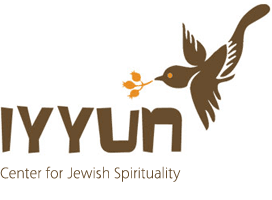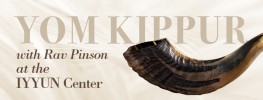In English the word prayer is employed to describe various activities, such as, petition, intercession, adoration, devotion, penitence, thanksgiving, confession, protest, affirmation, introspection, contemplation, evaluation, while these all may be the branches of prayer, what is prayer itself?
Movement Upward:
Overall, in a dualistic paradigm of reality, where one desires to be close to the another there can either be movement outward or inward. In terms of our, creations, relationship with our creator there can also be two movements either upward or downward.
On a most simple level prayer represents our movement upward reaching out for the Transcendent.
In Hebrew the word for prayer is tefilah—suggesting that prayer is an act of tofel, of “connecting and joining.†When we pray, we reach out, go beyond ourselves, beyond the immediate, and connect with the Source of all life.
On this sphere prayer is likened to the ladder in the dream of Jacob. As the Book of Genesis relates (28:12), in his dream, Jacob observed “a ladder set up on the earth, and the top of it reached to heaven.†The Midrash (Tanchuma) teaches that there were four steps to the ladder, and the Zohar illuminates that these four rugs parallel the four main stages of prayer, beginning with earthly reality and slowly moving upward and inward to a higher, deeper level of connection and unity with our Source. At the outset of prayer, we begin by standing on the first rung, a more pronounced measure of distance and alienation is felt, and through the course of the prayer service, we climb the ladder upward, as it were.
Four Steps:
As we move upward we are simultaneously moving deeper inward, as the four stages of prayer parallel the spiral worlds within worlds of creation mirror the four levels of soul.
Beginning on a world of action –asiyah, the soul level of physical/functional consciousness –nefesh, and moving into the world of formation and content– yetzirah, and the soul level of emotional consciousness- ruach. From there we move into the world of creation/context –beriah, and the soul level of intellectual/cognitive ability – neshamah. And then, we dip into the world of unity – atzilus, where the “light and the vessels are one†our soul reality of transcendental consciousness – chaya, which is reflected as our inner most deepest will.
For this movement to take flight we need to ascertain that our dedication, a bodily nefesh commitment, devotion-emotions, our ruach, intention- intellect, neshamah, and our will to connect, chaya, are properly oriented.
Passionate love, and a deep sense of awe will be the wings upon which we can lift off. In the Talmud (Taanis 2a) “service of the heart†refers to prayer, as prayer is an activity of the heart, with the heart and in the heart. Kavanah/Intention is also essential. To pray and connect we need to make sure that we function with the correct frame of mind, focus and concentration.
The Gift of Prayer:
Prayer is the greatest gift of all, as it is allows us to lift ourselves out of the trivialities of our life, to abandon over-indulgence and materialistic gain and become spiritually elevated, prayer allows us to connect with the Infinite. A Chassidic parable was once offered:
Once there was a mighty king who announced that all his subjects could come and request whatever they wanted from him, and their wishes would be granted. Some people came and asked for gold, some for silver, and some asked to be promoted to high-ranking positions. One wise person asked to be granted the opportunity to speak to the king three times a day. Hearing his request, and realizing that the wise man felt conversation with the king was of greater value that any jewels or position, the king decreed that access should be granted. And, as a token, the wise person could pass through any chamber of the palace on his way to the throne room and take what he likes.
Prayer as transformation
The Hebrew word tefilah shares its root with yefalel, which means “judgment,†and with pallel, which means to “judge†(as used in Psalms 106:30). To pray (lehispalel) is to judge oneself. Prayer is a time when we are alone with ourselves and in the presence of the Master of the Universe. This is a good time for introspection and self inspection—this is a good time to observe our inner self, examine where we are headed, what needs improvement, as well as what is positive in our lives.
Often, the best way to do this is to simply notice what grabs the mind as we are trying to concentrate on the prayers. If the mind continually wanders about, we can observe where it wanders. Â Of course, it would be better to let go of these thoughts, since they are intruding on our focus. But by noticing how they continue to creep in, we can discover what our concerns are and work to fix the trouble spots.
Standing in the midst of prayer, filled with an overwhelming awareness that we are in the presence of the Infinite Creator, we find our walls of self-delusion and deception come crumbling down. True honest communication occurs. We cannot fool ourselves longer. When we open ourselves to Hashem, our life becomes ever more transparent, and true work can be done toward self-improvement.
For this reason, prayer is also called avodah meaning literally “work†or “service.†The word avodah shares its root with ibud which means “working over/transforming.†It is through the act of praying that we can work ourselves over and transform for the better. We can open ourselves up to experience, and re-experience, our authentic selves.
Though this is serious internal work, demanding full honesty, it does not need to be a depressing chore. To the contrary, “joy breaks all boundaries.†(Berachos 31a.) When we enter prayer with joy and confidence, we are demonstrating our intrinsic closeness with Hashem, as we are openly communicating with, and cleaving to, our Source.
Prayer as Oneness
Yet, beyond the paradigm of duality, where there is “light and vesselâ€, where we connect and relate and connect, prayer allows us to transcend relationship. Relationship implies inherent separation—two separate entities coming close, yet remaining on some level always apart. The peak experience of prayer is when we attain total unity, deveikus- unification with our Source. When our personal “i†becomes realized within the embrace of the “Infinite I,†and there is a melding of the “two†into “one.â€
When we achieve the maximum potential in prayer, we transcend our limited defined ego self and dip into the limitless, transcendent, Infinite, although, the process of ‘getting there’ is through the various states of our consciousness. It is much like deep intimacy, which is truly intimate, transcending boundaries of separateness, a total melding of the two into a one, but can only meaningfully transpire after there is a nefesh-physical commitment, ruach –a beautiful love between the two, neshamah – an understanding of their love, and chaya – a will to connect, and only then can the deepest transcendence occur, and a complete and absolute merging of the two into a greater one.
As the “separate ego self†ceases to make itself manifest, the “transcendent self†emerges. And our prayers are no longer focused on our own selfish wants, needs or desires, but on the good of the entire community.
The Talmud (Berachos 30b) says that “one may recite the prayers only in a state of heaviness of the head.†Literally, “heaviness of the head†means humility, (Rashi) but a deeper interpretation suggests that “heaviness of the head†is an anthropomorphic term speaking of “The Headâ€â€”the Shechinah—or Divine Presence within creation. When we pray, we should be mindful of the pain and sorrow of the Shechinah who now exists in a state of exile, entrapped, and concealed.
Mirroring our predicament, the Shechinah is in exile when we are in exile. When we do not have what we need in order to maximize our spiritual potential, that is not only a deficiency in us, rather it is a lack of divinity, as it were, that is not being expressed.
What ever level you are praying on, whether in a asiya- more vessel than light, more ego that transcendence reality, or atzilus- where light and vessel are unified, or beyond the paradigm of light and vessel, it is true for you.
Praise in Prayer:
One of the more perplexing aspects of prayer is the concept of praising the Creator. While we may be inclined to compare this to asking a friend for a favor—first you flatter him or her, then you make your request, but is this really how it works in prayer?
There are multiple levels to understanding this perplexing phenomenon, each true on their own level. The simple explanation would be that praise is chanted not for God’s sake but for our own. Praising the Creator helps us understand who God is in relationship to us. Praising the One who is transcendent helps us make the transcendent immediate, real and relevant to us.
Clearly the Infinite is above any forms of praise we can conjure up, or for that matter beyond any form. Yet the purpose of praise is precisely to draw down that which is beyond, and to induce that which is utterly sublime and formless to come into form. Say for example, when we praise the Creator for being the healer of the sick, we are actually trying to arouse the Divine attribute of healing and draw down this awesome power of healing into our own world. The same is with praising the Infinite as mighty, powerful, kind, and merciful. Praise is the revealing agent.
From Formless to Form:
By praising, we induce the above to descend below. Praise brings about the drawing down from the essence of the endless light, the or ein sof into the vessels kelim.
Though we draw down the light of the or ein sof, the light remains undividable. The essence of Divine light does not change by descending into vessels. True, the Divine will manifests itself differently—for example to one person it will come through the vessel of loving-kindness – chesed, while to another it will come through the vessel of restraint – gevurah, still the light does not change; only its revelation changes—the same light is seen in different colors through the filters of the different vessels.
The change that occurs through prayer in the Creator’s will is not a change in Hashem, as it were, as Hashem is the Source, changeless and uninfluenced, rather the Light assumes another form. Whereas before the light appeared as the “red†of harsh judgment, now the light appears as the “blue†of kindness.
Imagine Divine energy as clear water being filtered through colored funnels. In reality, the water never changes, though to the observer the red funnel looks like it contains red water and the blue funnel like it contains blue water, but this is only the perception of the observer—the water itself is the same and colorless.
In our prayers, after singing the Verses of praise, we conclude by saying, “Who chooses our song of praise, the King alone.†We are thus acknowledging that—even as we sing songs of praise and draw down Divine flux into our lives, bringing kindness and mercy into our lives and into the coming year—we are very much aware that the King-the Source is forever One. Though manifest in our world in various forms, the Infinite One remains unified and whole. The gift of prayer is that we can tap into this reality, and sense this unified oneness amidst all situations and all of life.
May all your deepest prayers be answered, and may you be a proper vessel to receive the light. May the coming new year bring you and all your loved ones all the blessings, for health, and physical and spiritual prosperity. Peace and harmony to all of us and the entire world.







